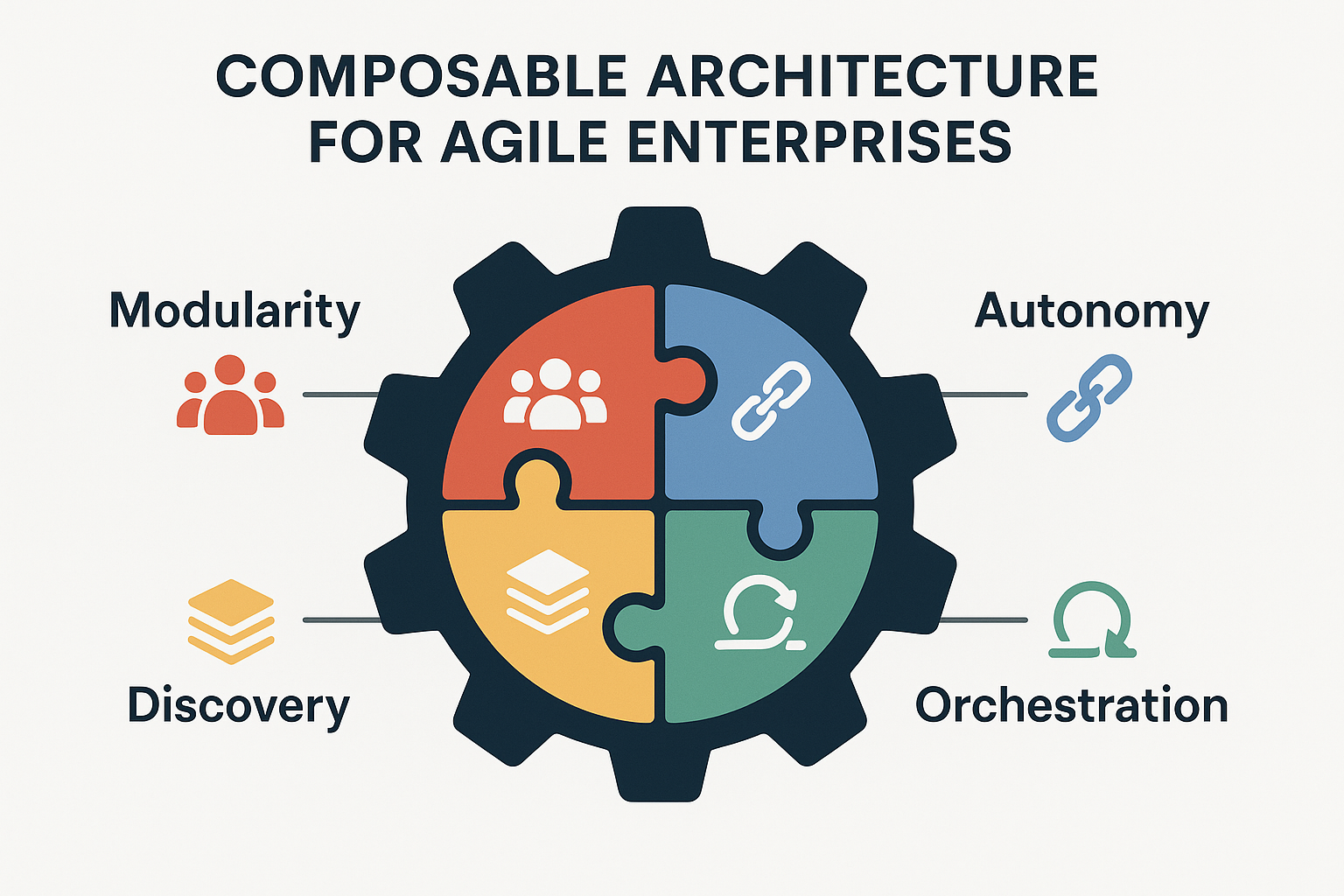In a fast-changing market, rigidity is a liability. Composable architecture turns monolithic systems into modular, plug-and-play ecosystems. It empowers enterprises to respond rapidly to change, innovate faster, and scale smarter—all while keeping complexity in check.
What Is Composable Architecture?
Composable architecture is the Lego mindset of modern IT:
Modular: Systems are built from independent building blocks (microservices, APIs, headless components)
Interchangeable: Components can be reused or swapped with minimal disruption
Decoupled: Frontend, backend, and data layers operate independently
Business-Aligned: IT aligns with business capabilities, not fixed systems
Gartner calls it: ―The future of business resilience and adaptability.
Key Principles of Composability
1. Packaged Business Capabilities (PBCs)
Each service/component maps to a specific business function (e.g., pricing, identity, payment)
2. API-First Design
Interfaces are treated as products—versioned, discoverable, and secured
Promotes interoperability and third-party integrations
3. Cloud-Native & Headless
Systems are deployed flexibly (SaaS, containers, serverless)
UI is decoupled from logic, enabling multichannel experiences
4. Autonomy & Reusability
Teams can develop and deploy independently
Code reuse accelerates delivery and reduces duplication
Business Benefits
| Traditional IT | Composable Architecture |
| Long release cycles | Fast iteration and time-to-market |
| Vendor lock-in | Choice-driven ecosystem |
| One-size-fits-all tools | Tailored business capabilities |
| Costly upgrades | Component-level updates |
Agile isn’t just about software—it’s about how business capabilities are built and evolved.
Challenges and Enablers
Challenges:
Governance complexity
Managing distributed ownership
Integration overhead
Skills and mindset shift
Enablers:
Enterprise service catalogs
DevOps + CI/CD pipelines
Strong API management
Cultural shift toward experimentation
Conclusion
Composable architecture allows enterprises to move from ―projects‖ to products, from ―platforms‖ to ecosystems. It’s how modern businesses unlock agility at scale, enabling them to sense, respond, and thrive in an environment of constant change.





